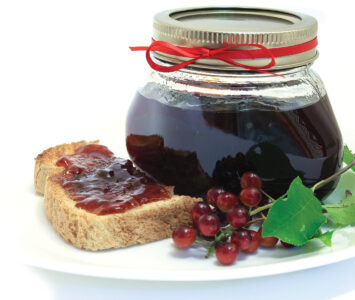
Ingredients
- 1/2 gallon milk (not ultrapasteurized)
- 1/8 teaspoon powdered yogurt culture or 1/8 cup fresh plain yogurt with active cultures
- 1 drop (0.005 ml) double- or single-strength rennet diluted just before use in 4 tablespoons cool, nonchlorinated water
Directions
- Heat milk to 180 degrees Fahrenheit and hold it there for 10 minutes. Then, remove from heat and let cool to 115 degrees.
- Add culture. If you’re using powdered culture, sprinkle it on top of milk and let sit for 1 minute, then whisk it in. If you’re using fresh yogurt, combine yogurt and 1/4 cup of warm milk in a small bowl and whisk until smooth, and then add mixture to remaining milk.
- Stir in 1 tablespoon of rennet and water mixture, if you’re using double-strength rennet, or 2 tablespoons mixture if you’re using single-strength rennet.
- Incubate at 110 degrees for 8 to 12 hours.
- Chill and store in the refrigerator.
Icelandic Skyr Yogurt
This traditional Icelandic yogurt is distinctive in using a touch of rennet to help coagulate the milk. Don’t use ultra-pasteurized milk in this recipe, as it’ll negatively affect rennet coagulation.
Yield: 1/2 gallon.
My husband and I eat yogurt mixed with granola or whole-grain cereal most days for breakfast. A quality yogurt contains protein, vitamins, and minerals, and is an excellent source of probiotics. Many store-bought traditional yogurts are too sweet and taste artificial. My favorite is skyr (pronounced SKEER) — a high-protein, Icelandic dairy product that’s thick like Greek yogurt, but not as tangy. Some say that skyr is actually a cheese, because the process for making it has historically involved adding rennet to milk, as one would do when making mozzarella. The brand I prefer doesn’t use artificial preservatives, thickeners, sweeteners, flavors, or colors, but it’s nearly twice as expensive as other varieties.
Making yogurt is a simple process: Heat up the milk, let it cool, add a starter, and then incubate the batch by maintaining a set temperature for 8 to 12 hours. A few years ago, I tried to make yogurt at home for the first time. The result tasted fine, but the consistency was uneven and thin. I wanted to master this skill, so I set out to make another batch. My second attempt wasn’t as good as my first, and was quite like cottage cheese.
My trouble was the incubation phase. I was using the proving drawer under my oven, and it was difficult to keep a consistent temperature. I constantly monitored the drawer, so the temperature fluctuated, causing the yogurt to separate from the whey and become grainy. While I did find a use for it by adding it to smoothies, it wasn’t what I was going for.
I wasn’t ready to give up on homemade yogurt. I was determined to save money, cut back on plastic, and create a high-quality product. So, I decided to get a yogurt maker. There are many other methods for fermenting milk, but most require constant monitoring. Although these other methods are readily available, such as using an insulated cooler, slow cooker, or pressure cooker, they still require more attention than I can spare.
Equipped with the Roots and Harvest Yogurt Maker and the new book Homemade Yogurt & Kefir by Gianaclis Caldwell, I decided to give yogurt-making one last shot. In addition to traditional yogurt recipes, Homemade Yogurt & Kefir has a recipe for Icelandic skyr. The Roots and Harvest Yogurt Maker features seven digital preset temperatures along with a digital timer, and it comes with ten 4-ounce glass jars with lids. I found it easy to use: Simply pour a mixture of heated milk and yogurt culture into the glass jars and set the timer. The yogurt maker shuts off automatically when the cycle is complete and requires no attention.
You can make yogurt with whole or reduced-fat milk, but I prefer whole, because it has a higher fat content and produces a richer product with more creaminess. I chose a pasteurized, homogenized whole milk from a local dairy, and I picked a high-quality, store-bought yogurt with no additives and live, active cultures for the starter culture. Not all store-bought yogurts use probiotic cultures, so check the label. The yogurt turned out thick, creamy, and delicious!
Now that I’ve found an inexpensive way to make high-quality yogurt, it has gone beyond breakfast. I use it to replace buttermilk in biscuits; I mix it with herbs and garlic for a savory spread on toast; and I’ve found that it’s an easy and delicious marinade for grilled meat and vegetables.
Learn more fermentation tips from Gianaclis Caldwell in our “How to Make, Use, and Love Milk Kefir” video course.
Looking for a dairy-free yogurt? Try this Coconut Yogurt Recipe.
Laura Perkins grew up on a horse farm just outside Topeka, Kansas, where she developed a lifelong love of nature, animals, and plants.









